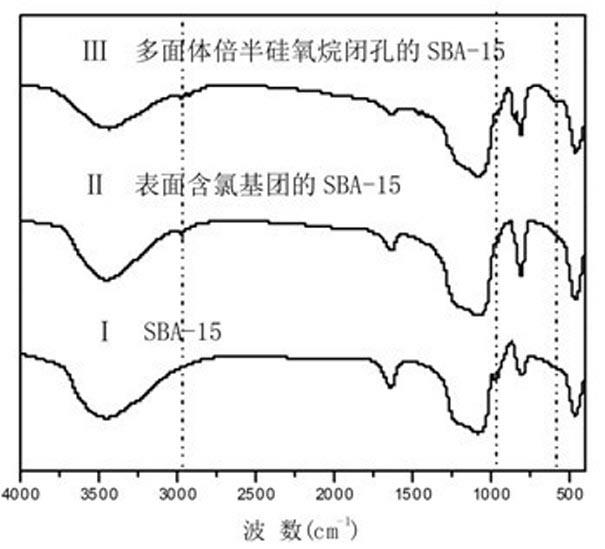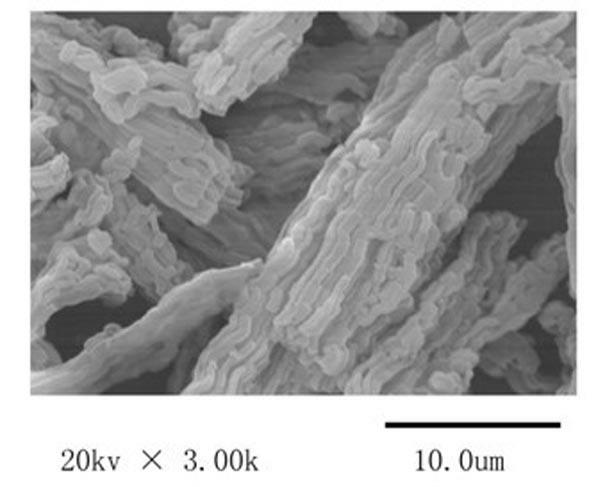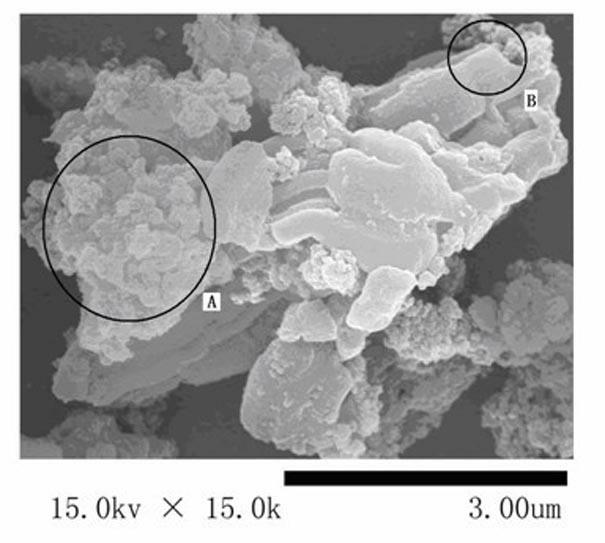Modified thermosetting resin and preparation method thereof
A thermosetting resin and thermosetting technology, which is applied in the field of thermosetting resins, can solve the problems that the resin matrix cannot be prevented from entering the mesoporous silica channels, the incomplete closed-pore mesoporous silica is not easy to apply, and the selection of raw materials is narrow. The effect of electrical constant, high specific surface area, and wide applicability
- Summary
- Abstract
- Description
- Claims
- Application Information
AI Technical Summary
Problems solved by technology
Method used
Image
Examples
Embodiment 1
[0027] 1. Preparation of closed-pore mesoporous silica
[0028] 1 g of mesoporous silica SBA-15 was kept at 110° C. for 2 hours to obtain dry mesoporous silica SBA-15. Add 22.7 g of anhydrous toluene to dry SBA-15, stir, and slowly add 2.15 g of dimethyldichlorosilane dropwise at 40°C. After completion of the dropwise addition, the reaction was carried out at 40° C. for 6 hours. Vacuum removal of anhydrous toluene and unreacted polychlorosilane gave a white powder, which was washed 3 times with anhydrous toluene to obtain a crude product. The crude product was dried at 55° C. for 7 hours to obtain mesoporous silica containing chlorine groups on the surface. Its infrared spectrum and scanning electron microscope (SEM) are shown in the attached figure 1 and 2 shown.
[0029] Add 1g of mesoporous silica containing chlorine groups on the surface to 68.4g of anhydrous acetone to form solution A; add 1g of octa(tetramethylammonium) silicate to 24.9g of anhydrous methanol to for...
Embodiment 2
[0036] 1. Preparation of closed-pore mesoporous silica
[0037] Closed-pore mesoporous silica was prepared according to the method of Example 1.
[0038] 2. Preparation of modified bismaleimide resin
[0039] 10g of N,N'-4,4'-diphenylmethane bismaleimide (BDM), 8.5g of diallyl bisphenol A (DBA) and 0.37g of the polyhedral sesquite prepared in Example 2 Siloxane closed-pore mesoporous silica SBA-15, stirred evenly at 140°C to obtain modified bismaleimide resin.
[0040] Vacuumize the obtained modified bismaleimide resin at 140°C for 0.5 hours, and then follow the processes of 150°C / 2h+180°C / 2h+200°C / 2h+220°C / 2h and 230°C / 4h for curing and post-processing. After natural cooling, the cured modified bismaleimide resin was obtained, which was recorded as BDM / DBA / 2pSBA-15. Its dielectric constant-frequency curve is shown in the attached Figure 4 Curve b in (BDM / DBA / 2pSBA-15).
Embodiment 3
[0052] 1. Preparation of closed-pore mesoporous silica
[0053] 1 g of mesoporous silica SBA-15 was kept at 110° C. for 2 hours to obtain dry SBA-15. Add 20 g of anhydrous toluene to dry SBA-15, stir, and slowly add 2 g of dimethyldichlorosilane dropwise at 40°C. After completion of the dropwise addition, the reaction was carried out at 40° C. for 6 hours. Vacuum removal of anhydrous toluene and unreacted polychlorosilane to obtain a white powder, which was washed twice with anhydrous toluene to obtain a crude product. The crude product was dried at 55° C. for 7 hours to obtain mesoporous silica containing chlorine groups on the surface.
[0054] Add 1g of mesoporous silica containing chlorine groups on the surface to 30g of anhydrous acetone to form solution A; add 1g of octamer(tetramethylammonium) silicate to 20g of anhydrous methanol to form solution B. Solutions A and B were mixed, and the mixture was sonicated at 40 °C for 20 min to form solution C. Solution D was fo...
PUM
 Login to View More
Login to View More Abstract
Description
Claims
Application Information
 Login to View More
Login to View More - R&D
- Intellectual Property
- Life Sciences
- Materials
- Tech Scout
- Unparalleled Data Quality
- Higher Quality Content
- 60% Fewer Hallucinations
Browse by: Latest US Patents, China's latest patents, Technical Efficacy Thesaurus, Application Domain, Technology Topic, Popular Technical Reports.
© 2025 PatSnap. All rights reserved.Legal|Privacy policy|Modern Slavery Act Transparency Statement|Sitemap|About US| Contact US: help@patsnap.com



